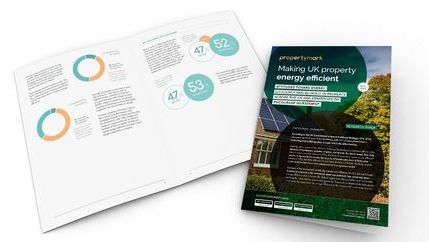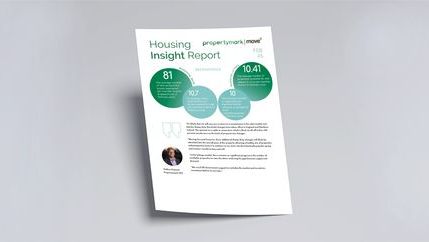
Download our report: Energy Efficiency In UK Property: Where To Go From Here? →
In October 2021, the UK Government published its Heat and Buildings Strategy that set out how the UK will decarbonise homes and commercial, industrial and public sector buildings, as part of setting a path to net zero by 2050. Since then, the moving of goalposts for properties to reach a minimum EPC C rating has taken place with continual consultations on various reforms. Targets and regulations are also under review by the governments and departments in Wales, Scotland and Northern Ireland.
Consumers aren’t driving change
Starting with a review of the influence of Energy Performance Certificates (EPCs) on the decisions of homebuyers, property investors, and tenants, our report reveals that while there is some consumer interest in EPCs, the level of importance varies across different sectors.
In the residential market, 73% of homebuyers show at least some interest in EPCs, but their influence on purchase decisions is limited. Similarly, tenants in the rental market show some interest but not to a significant extent.
However, in the commercial market, the interest and influence of EPCs are much lower and 41% of Propertymark commercial member agents surveyed reported investors never show an interest in the EPC and 59% see no interest from tenants. This may be due to the limited supply and other priorities such as location and logistics. Nonetheless, as pressure grows for businesses to demonstrate their green credentials, the importance of energy efficiency in the commercial sector may increase.
The best ways to incentivise retrofitting
Government grants that cover a broader range of home improvements is the only way to drive change, with 72% of residential and commercial agents citing this being the most important factor. This was closely followed by offering larger grants for home improvements, where 67% said that allowing energy efficiency improvement costs to be offset against capital gains tax, and reduced tax on the purchase of home movers next property is a key incentive.
Recommendations from Propertymark
Avoid a ‘one-size-fits-all’ approach
Policy makers must move away from a one-size fits all policy and develop energy efficiency proposals that work with the different age, condition, and size of properties. This way grants and funding support can be targeted based on the architype of a property rather than its tenure and making each property as energy efficient as possible. As a result, property is not lost from the private rented sector and buildings do not become too expensive to improve.
Ensure timely implementation and provide clarity on targets
To effectively plan to retrofit homes, homeowners and landlords require clarity on how energy efficient property need to be, how it will cost and by when. Currently, there is no definitive target that has been legislated for, only recommendations from multiple reports. The UK and Devolved Governments need to develop a long-term policy framework and legislate on clear targets for EPC ratings for people to implement energy efficiency measures.
Provide financial incentives and help reduce energy bills
Investing in energy efficiency does not lead to higher house prices which would under different circumstances provide a sufficient incentive. Until this is the case, alternative incentives such as vouchers to cover the costs of retrofit evaluations, loans and grants to pay for energy efficiency improvements, allow energy performance improvements to be offset against rental income or the ability to offset improvement costs against capital gains tax must be provided to support homeowners and landlords to act.
Embark on a national communication campaign
Vital to meeting decarbonisation targets will be solving the challenge of convincing landlords and homeowners of the benefits of retrofit and making energy efficiency improvements to property. The views of landlords and owner occupiers will play a significant role in the success of retrofitting, which will substantially impact the uptake of energy efficiency improvements and retrofit programmes, even if government funding exists to cover the cost of retrofitting.
Explore the introduction of a Property Passport
Information would be transferable across building owners and help maintain sight of a long-term decarbonisation goal for the building. The process would not replace EPCs, but enhance them, creating an opportunity to capture EPC data digitally and add to it with other data over time. A Property Passport would also provide detailed guidance on the actions required, and already undertaken, to improve the property, based on building fabric and operational data helping building owners and occupiers make decisions to improve the energy efficiency of buildings.
Making UK property energy efficient
Financial implications, practicality, consequences, and communication surrounding energy efficiency measures are key concerns cited in Propertymark’s latest report which provides recommendations to help homeowners, landlords, and tenants save money, create new jobs and fight climate change.







